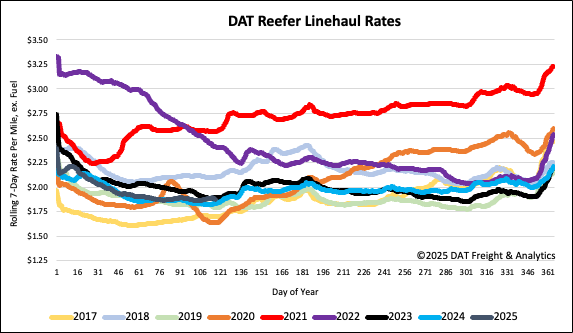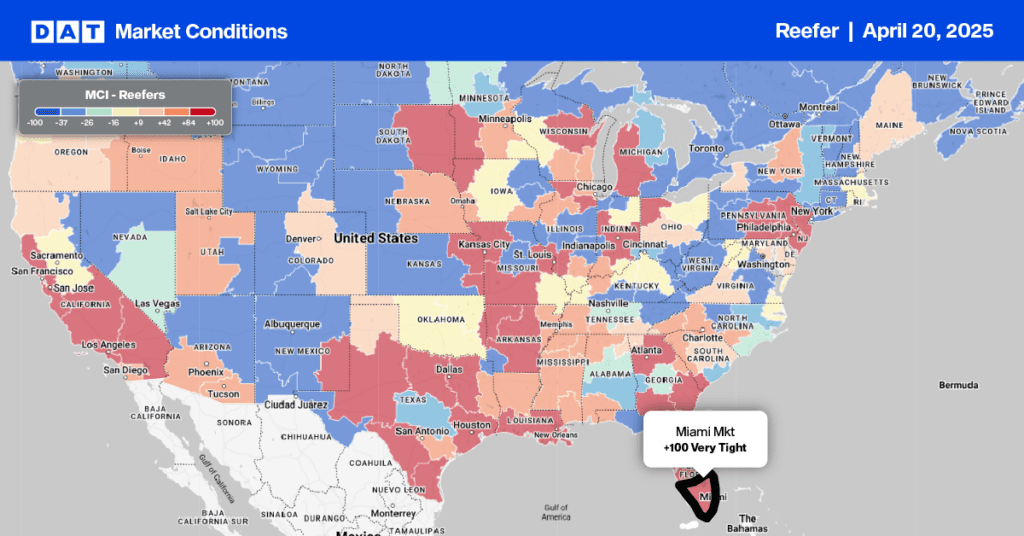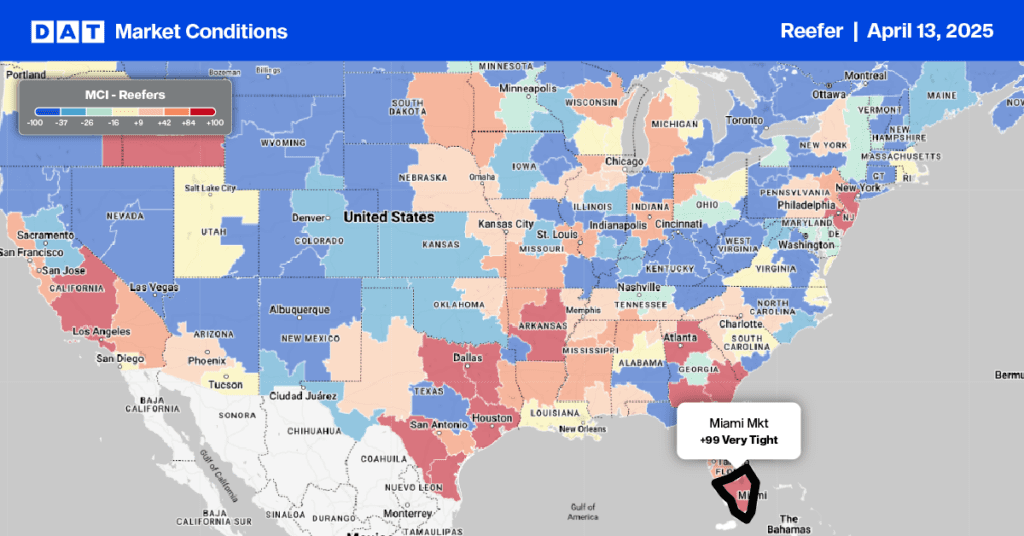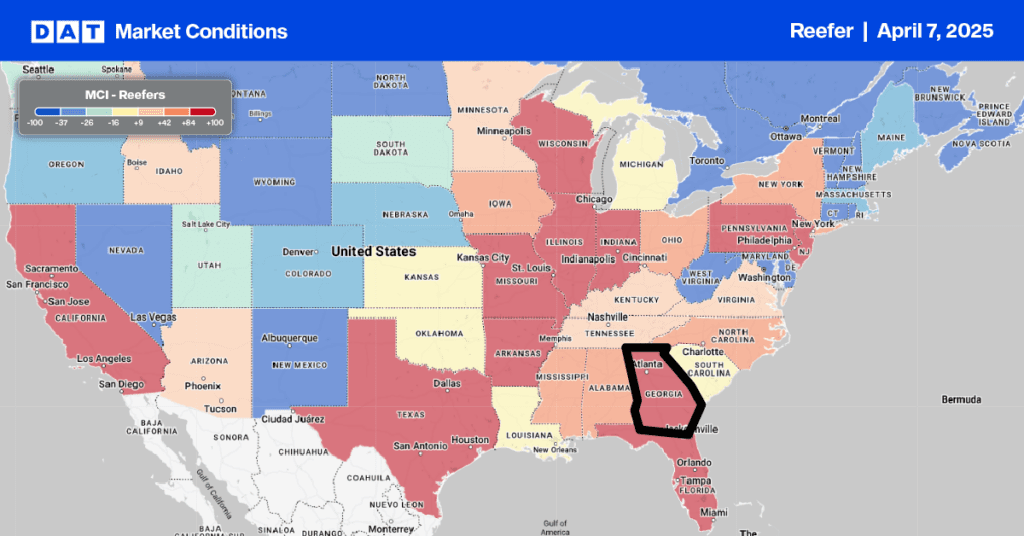Legend has it the garden strawberry was created in Brittany, France, although English settlers who landed in Jamestown, Virginia, discovered an abundance of wild strawberries in the early 1600s. Today, the strawberry is the leading small fruit crop in the U.S., with California and Florida being the principal strawberry-growing regions: Florida for winter berries in the Lakeland freight market, California for spring, summer, and fall fruit in the San Francisco, Fresno, and Los Angeles DAT freight markets. Fresh strawberries are one of the first fruits to ripen each spring, so May is also National Strawberry Month, coinciding with the start of the peak shipping season. Last season around a quarter of strawberries were shipped in May and June alone.
Get the clearest, most accurate view of the truckload marketplace with data from DAT iQ.
Tune into DAT iQ Live, live on YouTube or LinkedIn, 10am ET every Tuesday.
Even though strawberries are grown in most states in the U.S., according to the USDA, 90% of the strawberries grown in the U.S. originate in California along the central coast from Santa Cruz to Santa Maria and Ventura. The largest strawberry-growing region in California is the Salinas-Watsonville region producing around 45% of state volume, followed by Santa Maria (37%) and Oxnard (17%). The U.S. also imported 9% of its annual volume from Mexico last year, with 52% arriving in Otay Mesa, CA, in the San Diego freight market and another 42% crossing into the U.S. in Pharr, TX, in the McAllen market.
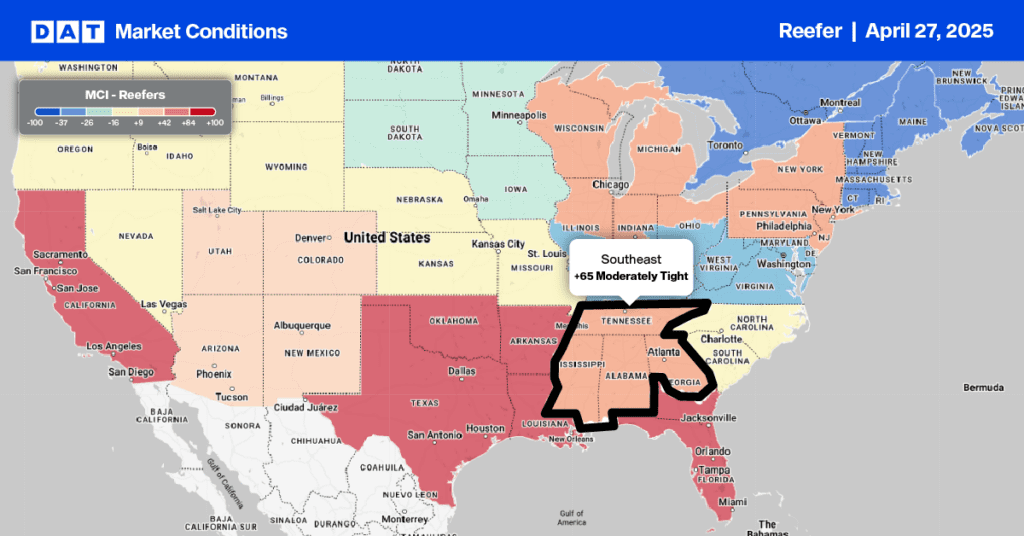
Load-to-Truck Ratio
Reefer load post volumes increased for the third week as produce season comes on line in the Southeast and West Regions. As a result of higher load post volumes, the national reefer load-to-truck ratio (LTR) was up 31% last week to 9.92, the highest in nine years.
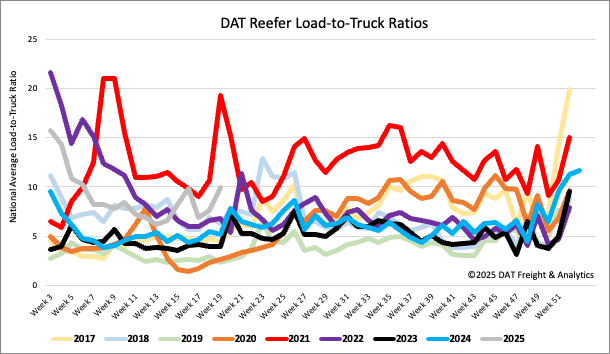
Spot rates
Available reefer capacity tightened slightly last week, with the national average reefer spot rate ending the week at $1.90/mile, the highest in two months. Reefer spot rates are $0.04/mile higher than last year and $0.01/mile lower than the 90-day trailing average.
